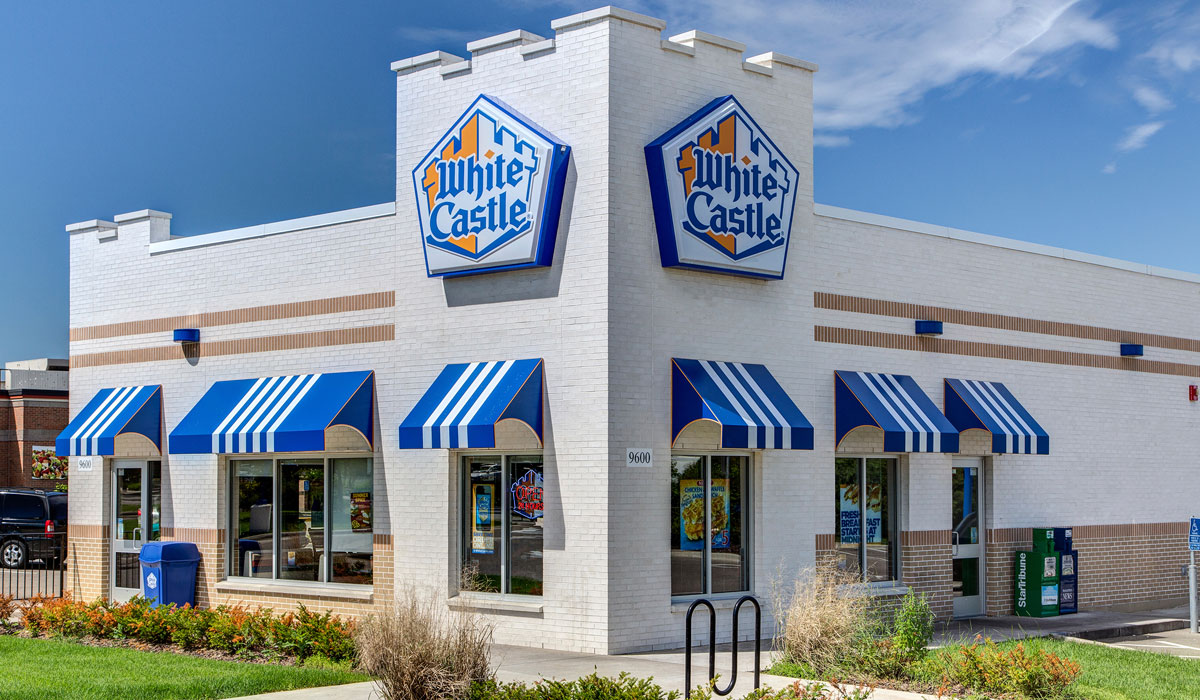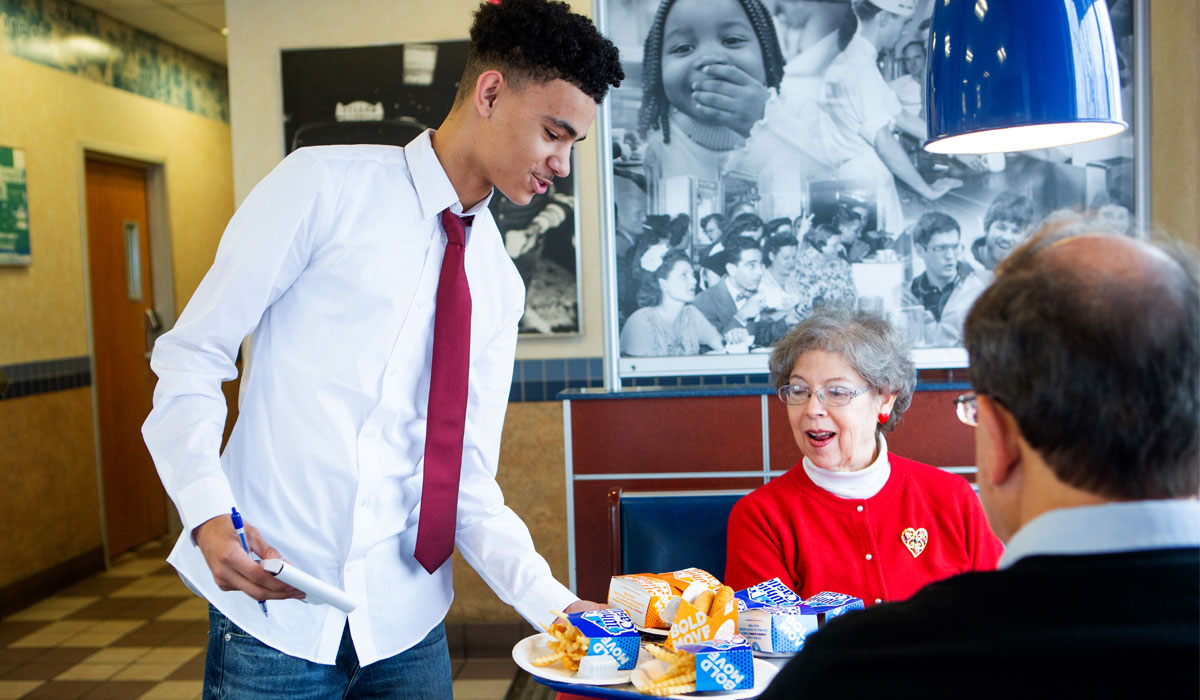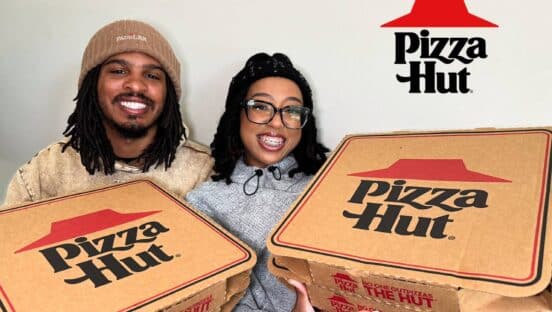When the decision to open in Arizona was final, White Castle told a local Facebook fan page first. “We figured they worked the hardest for it,” says Jamie Richardson, the chain’s vice president. “So we let them break the news.”
The group clamored for White Castle’s arrival for nearly a decade. But the slider chain’s growth stirred internally for far longer.
In the mid 1980s—around the same time White Castle introduced a drive-thru window and sliders cost 27 cents—the brand took its first serious crack at expansion. “At the time, it seemed like a good idea,” Richardson says.
The Columbus, Ohio-based company, founded in Wichita, Kansas, in 1921, tried its luck in Philadelphia and Kansas City. It poured money into infrastructure, built warehouses to store product, and hired employees. “But what we found is we elevated our costs so much that it really made it hard to be successful,” Richardson says.
“Then, candidly,” he adds, “we rushed and might not have, in hindsight, picked the best sites.”
Roughly 15 years later, White Castle exited. It was a tough lesson, Richardson says, for a company that proudly remains family-run nearly 100 years after The Original Slider debuted. “It made us more aware,” Richardson says, “of saying, ‘Let’s stack in the deck in our favor in terms of managing what we can manage.”
One development, and it might not be the sexiest headliner, is White Castle’s supply chain. White Castle opened its first location west of the Rocky Mountains January 2015 in Las Vegas—a move so popular the store had to close for more than two hours to restock after its grand opening. The restaurant cooked close to 4,000 burgers an hour for 12 straight. One guest drove in from Phoenix. Another stood in line three hours.
The closest White Castle was some 1,500 miles away in Cape Girardeau, Missouri. So how was the chain going to supply the straggler unit with buns and patties, which White Castle makes itself? Also, the deal was a licensing agreement with a group owned by Rob Richardson—a path the company doesn’t typically take and won’t moving forward, it said. Yet as unique as the process and logistics were, the group was ready to expand two years later. There are now three White Castles: the original on the Strip, a downtown store, and one near I-15 and Jean.

“So for us figuring out logistically how to support those Castles in Las Vegas was a big step for us,” CEO Lisa Ingram told the Arizona Republic. “Now that we figured that out, it opened up some opportunities for us to look out West and to look at other markets.”
It stressed another key point for White Castle, also a departure from previous efforts. The chain didn’t need to break the dam each time it entered a market.
“That was one of the other things we did decades ago,” Richardson says. “We thought that we had to get to a certain number of stores to have critical mass. As a result, we didn’t always get the best sites and we started to cannibalize our sales pretty quickly.”
The Arizona store—slated for The Block at Pima Center in Scottsdale—broke ground in mid-April. It’s planning for a fall opening and will be the first family-owned White Castle west of the Mississippi River. The ceremony was attended by Cravers Hall of Famer Alice Cooper, who says he grew up on White Castle’s two-by-two slices, and Ingram. Cooper, by the way, wants a corner booth named “The Dungeon.”
“I don’t know if we’re going to go there or not,” Richardson says with a laugh.
“They promised me a Castle close by, but I never thought they would do it,” Cooper said at the groundbreaking. “This is going to be epic.”
Arizona always rose to the top of corporate discussions about growth for the nearly 400-unit chain, which did $547.60 million in U.S. systemwide sales in 2017 on average-unit volumes of $1.441 million.
Here’s how White Castle’s unit count has tracked since 2013 (end of year figures):
- 2017: 380
- 2016: 384
- 2015: 390
- 2014: 391
- 2013: 400
Richardson says the “huge, huge dedicated loyal social media” following was a direct driver. The demographics just fit, too. There’s a large swath of migratory residents in the area who grew up in Midwest and East Coast markets where White Castle was a right of passage.
A July 26, 2018 post from one Facebook group, “Bring White Castle restaurants to Phoenix, Arizona” says: “Still trying. There’s got to be someone in the company that will listen to me!!”
How many growth-minded chains are courted this way? But it’s a thread that weaves through many of America’s regional quick-serve burger classics. Places like In-N-Out, A&W, Krystal, Whataburger, White Castle, and others. And, of course, White Castle even has a movie made in its honor.
“The fact that our sandwiches are known and loved there already helps a lot,” Richardson says of Arizona. “There’s a built in-base and loyal following. We also see it as a high growth area with lots of potential.”
Years ago, White Castle sent semi-trucks full of sliders across the nation to Fountain Hills. They were met by massive crowds. “… we’re officially here for the long haul,” Ingram said in April.
It won’t hurt catering to snow birds instead of surviving snowstorms, either. There is no timetable or expectation for further growth, Richardson adds.
“We’re going to let this be our starting point,” he says, “and see where it leads us.”
“If this is successful it certainly would behoove us to look for other places in Phoenix or in Arizona to find some more Castles,” Ingram added to the Arizona Republic.

Making the Impossible happen
Richardson admits it was a bit of a paradox early on. The “original fast-food hamburger restaurant” touting a plant-based product that breaks rules we didn’t know existed until recently.
When White Castle introduced the “Impossible Slider” April 2018 in 140 locations throughout New York, New Jersey, and Chicagoland, it made the chain, it claimed, the first fast-food brand to offer the product and put White Castle on “the bleeding edge of a rapidly evolving industry,” Ingram said.
The Impossible Burger debuted July 2016 at David Chang’s Momofuki Nishi in New York City. In addition to White Castle, Burger King and many other chains, from Umami Burger to The Counter to Red Robin, have joined in.
During early tests, sales were 30 percent higher than White Castle’s original expectations. Ingram said the Impossible Slider increased market share 250 percent over White Castle locations that did not serve it. As a result, the chain expanded availability systemwide about a year ago. And this past April, White Castle updated to Impossible Foods’ newly formulated recipe.
It was unveiled at CES 2019 in Las Vegas, where the product won several awards including “Most Unexpected Product,” “Most Impactful Product,” and the show’s “Best of the Best” honor. White Castle also teamed up with the Wu-Tang Clan to produce a four-part web series entitled, “Wu Tang in Space Eating Impossible Sliders.”
Richardson says the perceived dichotomy—a fast-food burger icon selling a “fake meat” option—evaporated once White Castle listened to guests. “Especially our millennial customers, and increasingly with an eye toward Gen Z and what’s on their minds,” Richardson says. “It really led us to believe that there’s something important here that we need to pay attention to because, candidly, we wouldn’t be around as a family-owned business for almost 100 years if we didn’t focus on listening to our customers and finding out what was important to them.”
After that, White Castle initiated conversations with people in the space. They clicked with Impossible Foods.
“We loved their zeal,” Richardson says.
“That’s what it came down to,” he adds. “The big picture, look at consumer trends and understanding this is a place where we need to learn more and be active, coupled with an openness and good friendship with Impossible Foods out the gate. It’s led us to be a lot further along than we would have guessed.”
It took roughly 6–9 months for the idea to mature. Logistically, there were some hurdles. The Impossible Slider is prepared different than the typical burger where White Castle “sets the grill.” It puts down a bed of onions and places beef on top. “The sacred art of hamburger preparation,” Richardson calls it.
The Impossible Slider, meanwhile, is mashed down on the grill already put together. “We learned really early on if we could work it out with them to have those come in pre-portioned versus portioning them ourselves it would make a huge different,” Richardson says.
“I think everybody is aching for that honestly. As the pace of change quickens and there’s more pressure to do more faster and more efficiently, now and then it’s not a bad thing to be able to ponder for a moment.” — White Castle vice president Jamie RIchardson on mobile ordering.
As far as customer education, Richardson says it has been a ground-level effort led by general managers, who average 21 years in tenure at White Castle. “Sometimes it gets undersold or not talked about enough, but our operations team absolutely made the Impossible possible,” he says.
So far, sales have fluctuated a bit as buzz subsided. There are some store where it’s one of the more-popular items. At others, it doesn’t mix too heavy.
“We knew we needed to find out how it was going to work in the real world at a Castle with high-volume Impossible Sliders and a Castle with low-volume Impossible Sliders,” Richardson says. “There was great acceptance going into the test [internally]. What our teams have seen is that it’s helped build sales and interest and awareness in White Castle.”
Proof White Castle took the launch next-level serious: chief marketing officer Kim Bartley went vegetarian for an entire year to better understand the consumer mindset.
“We said, ‘wow.’ That was inspiring to our teams,” Richardson says.
At launch, White Castle drew 100 million media impressions from the Impossible Slider as celebrities, like Katy Perry, took to social avenues.
“It’s a great tasting sandwich. That helps a lot,” Richardson says.

Tech into the Castle
White Castle launched nationwide delivery through DoorDash to nearly 300 units in July 2018. GrubHub was a smaller launch. Postmates is also involved. Richardson says delivery drives incremental visits and occasions White Castle “might not have been getting otherwise.”
It’s a snug fit as well since White Castle already considers itself a late-night oasis—a segment that typically over-indexes for delivery. Also, it’s simply a convenient way to order 30 burgers at once without holding up other customers.
On that note, mobile ordering through White Castle’s app has produced a major lift, Richardson says. Guests can pick times and locations for pick-up, which helps with bulk orders and upselling. “Then, if you have more space and there’s less pressure, you can say, hey, I might get some chicken rings with that or I might get some Impossible Sliders,” Richardson says.
“I think everybody is aching for that honestly,” he adds. “As the pace of change quickens and there’s more pressure to do more faster and more efficiently, now and then it’s not a bad thing to be able to ponder for a moment.”
This is especially true in the drive thru, where White Castle enjoys 70 percent of its business. “You don’t want the kid screaming from the back of the car, ‘don’t forget my milkshake,” Richardson says.
The mobile app lets guests slow down, perhaps order more, and it’s also more accurate.
In the back of the house, Richardson says, 92 percent of White Castle employees have the app on their phones. They can see their schedule, offer up shifts, take new ones. Workers are covering before it even gets to the GM’s desk. “It’s been amazing. It’s been a really, really great tool. I can’t say that enough, Richardson says.







